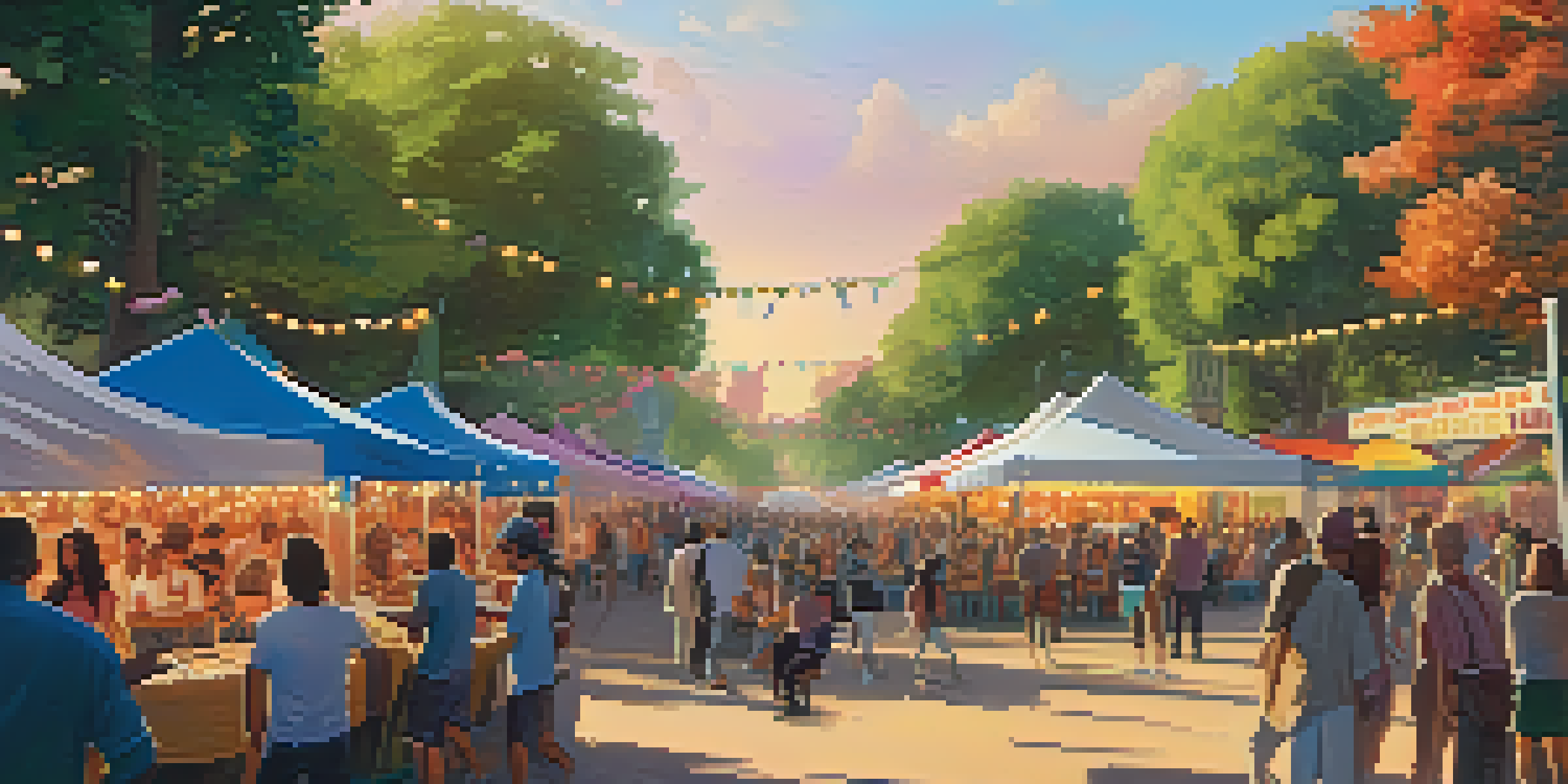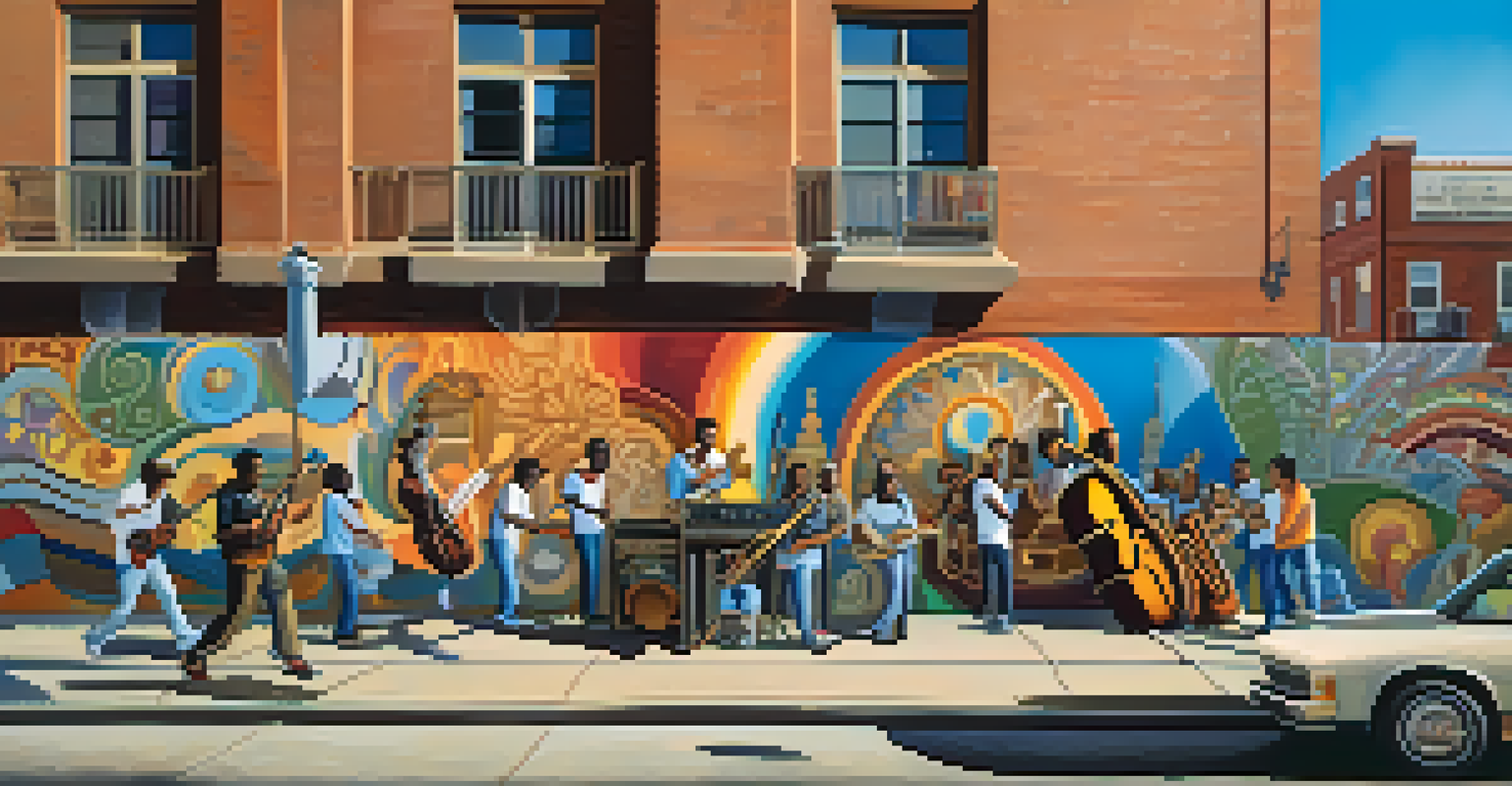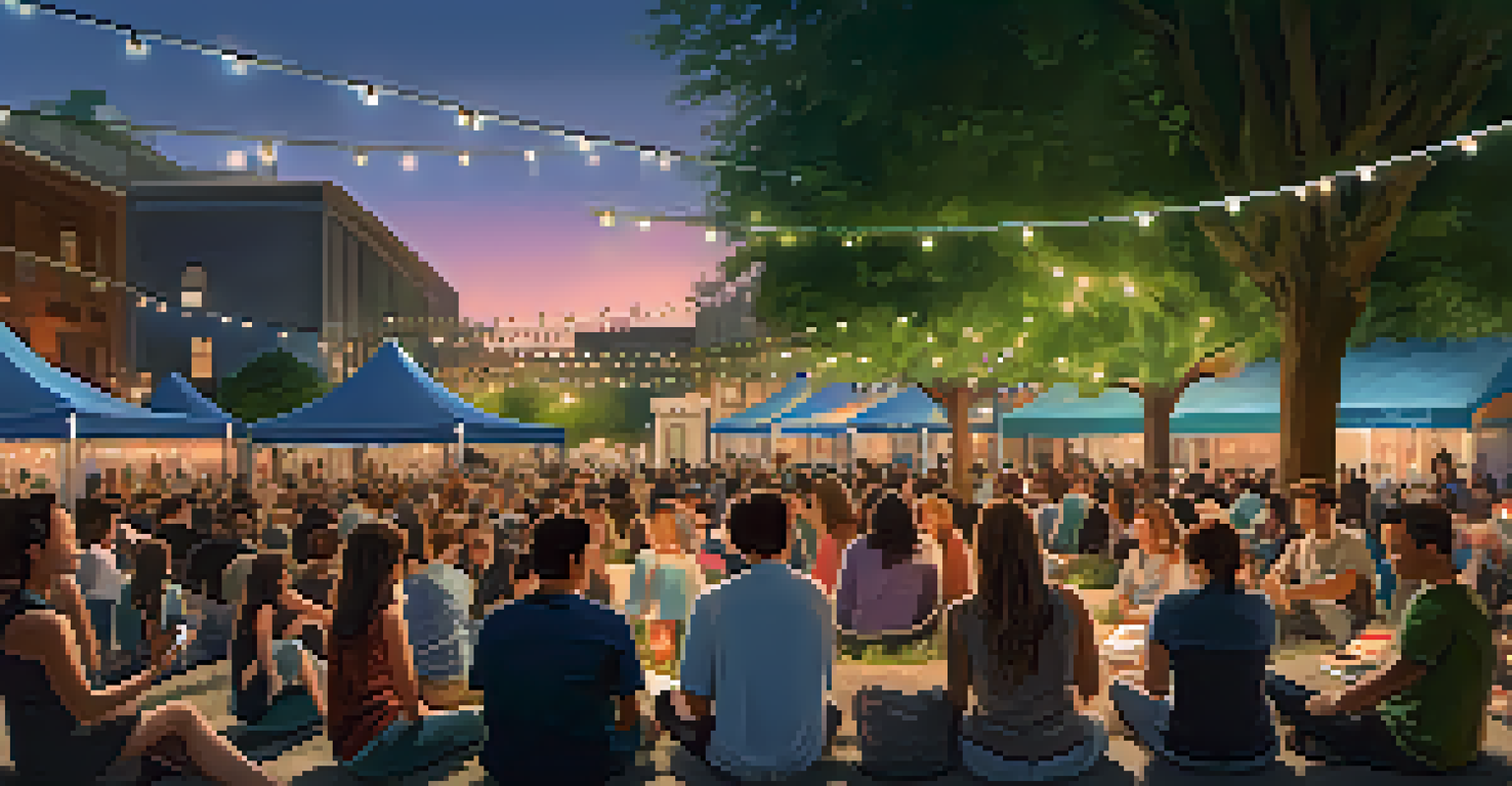Music as a Tool for Urban Regeneration and Revival

Understanding Urban Regeneration Through Music
Urban regeneration refers to the process of revitalizing declining areas in cities. Music plays a crucial role in this transformation by creating vibrant cultural hubs that attract people. By infusing life into neglected spaces, music can breathe new energy into a community's identity and purpose.
Music is the shorthand of emotion.
For example, cities like Detroit have leveraged music festivals and local artists to spark interest in their neighborhoods. This not only boosts local economies but also fosters a sense of pride among residents. By turning urban decay into a canvas for creativity, music becomes a powerful catalyst for change.
Ultimately, music helps to redefine the narrative of urban spaces, shifting perceptions from desolation to dynamism. As communities come together around music, they cultivate a shared identity that strengthens social ties and encourages collaboration.
Case Studies: Successful Music-Driven Revivals
Cities around the world have successfully used music to revitalize their urban landscapes. For instance, Nashville transformed from a struggling town to a vibrant music city, attracting tourists and new residents alike. The establishment of music venues and festivals has not only improved the economy but also enhanced the cultural fabric of the city.

Similarly, in Johannesburg, South Africa, music festivals have been pivotal in community rebuilding efforts. By celebrating local talent and cultural heritage, these events foster community engagement and pride. They invite people from diverse backgrounds to participate and share in the revitalization of their neighborhoods.
Music Revitalizes Urban Spaces
Music plays a vital role in transforming neglected urban areas into vibrant cultural hubs that enhance community identity.
These case studies highlight the tangible impact of music on community strength and economic growth. By investing in music as a tool for urban regeneration, cities can create lasting change that resonates well beyond the initial revival efforts.
The Psychological Impact of Music on Communities
Music has a profound psychological effect on individuals and communities. It can evoke emotions, inspire creativity, and even improve mental health. When communities engage in musical activities, they foster a sense of belonging and connection among residents.
Without music, life would be a mistake.
Participating in music, whether through concerts, workshops, or community choirs, can reduce feelings of isolation and improve overall well-being. This sense of togetherness is especially important in urban areas where individuals may feel disconnected from their neighbors.
Moreover, the shared experience of music can bridge cultural divides, promoting understanding and empathy. In this way, music serves not just as entertainment but as a vital tool for social cohesion and community resilience.
Music as a Catalyst for Economic Development
The economic benefits of music in urban regeneration are significant. Music festivals, live performances, and local music scenes can draw visitors, leading to increased spending in the area. This influx of tourists and patrons supports local businesses, from restaurants to shops.
Additionally, music industries create job opportunities for artists, event organizers, and venue staff. By fostering a vibrant music scene, cities can stimulate employment and encourage entrepreneurship within the community.
Economic Growth Through Music
Music festivals and local music scenes stimulate economic development by attracting visitors and creating job opportunities.
As local economies thrive, the positive effects ripple outwards, enhancing the quality of life for residents. This economic revitalization, driven by music, underscores its importance as a tool for urban regeneration.
Creating a Sustainable Music Ecosystem
For music to be an effective tool for urban regeneration, it’s essential to create a sustainable ecosystem. This involves supporting local artists, venues, and cultural organizations through funding, resources, and community engagement. By nurturing local talent, cities can cultivate a rich musical landscape that reflects their unique identity.
Moreover, collaboration between local government, businesses, and artists is crucial. Establishing partnerships can lead to innovative programs and initiatives that benefit the entire community. This collaborative approach not only strengthens the local music scene but also ensures its longevity.
Ultimately, a sustainable music ecosystem fosters continuous growth and renewal in urban areas. When communities invest in their musical heritage, they pave the way for future generations to thrive creatively.
Music and Place-Making: Enhancing Urban Spaces
Music is a powerful tool for place-making, which refers to the process of creating quality places that people want to live, work, and play in. By integrating music into public spaces, cities can enhance the atmosphere and encourage community interaction. Parks, streets, and plazas transformed into lively music venues invite people to gather and connect.
For instance, outdoor concerts can turn a simple park into a vibrant community hub, attracting diverse audiences. This not only revitalizes the space but also provides opportunities for local artists to showcase their talent, creating a win-win situation.
Community Engagement via Music
Engaging in musical activities fosters a sense of belonging and connection among residents, promoting social cohesion.
As urban spaces become more engaging and inviting through music, they encourage social interaction and build community spirit. This transformation reinforces the idea that music is not just an art form but a vital ingredient in the recipe for successful urban living.
Challenges and Solutions in Music-Driven Urban Regeneration
Despite the benefits, there are challenges associated with using music for urban regeneration. Noise complaints, gentrification, and the potential displacement of local communities can arise when music initiatives are poorly planned. It’s essential to strike a balance between fostering creativity and maintaining the integrity of existing neighborhoods.
One solution is to engage local residents in the planning process, ensuring that their voices are heard and their needs are met. By involving the community, cities can create music programs that reflect the unique identity of the area while minimizing negative impacts.

Additionally, promoting inclusive music events that cater to diverse populations can help mitigate issues of gentrification. By prioritizing accessibility and equity, cities can ensure that music remains a unifying force in urban regeneration.